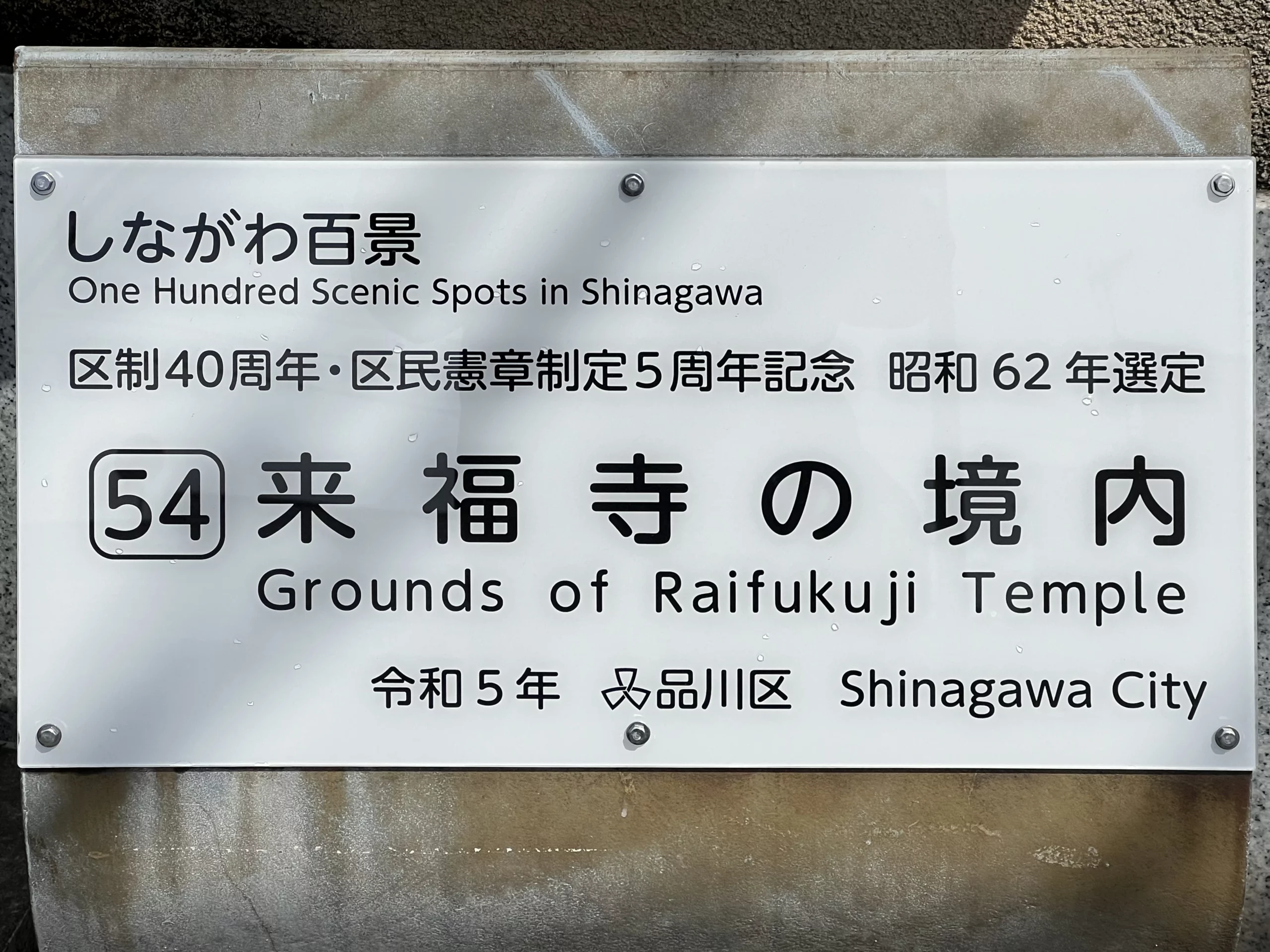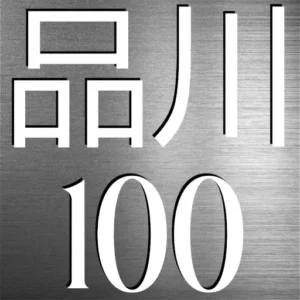Grounds of Raifukuji Temple – A Thousand Years Beneath the Cherry Trees
Raifukuji Temple (來福寺) is one of the oldest religious sites in Shinagawa Ward. Founded in 990 CE by the monk Chiben Ajari, this Shingon Chizan sect temple has stood for over a millennium, weathering wars, political change, and urban transformation. Its peaceful grounds are home to cherry trees, haiku monuments, and centuries of quiet devotion.
While the current buildings are all post-war reconstructions, the temple grounds retain a deep historical atmosphere, with a lush garden just inside the gate and a sense of timelessness among the stones and trees.
👷️ From Sutra Mound to Jizō
The “grounds” of Raifukuji later became very significant. In the late 15th century, the priest Baigan was walking past what was believed to be a sutra mound built by Minamoto no Yoritomo when he heard chanting from underground. Digging into the soil, he uncovered a statue of Jizō Bosatsu. That statue became the temple’s principal object of worship, known today as the Kyōyomi Jizō (經読地蔵) or “Sutra-Reciting Jizō,” also called Enmei Jizō (延命地蔵) or “Life-Prolonging Jizō.” This origin story links Raifukuji not only to Buddhist faith but to the legendary foundation of Kamakura-era warrior culture.
🌸 Blossoms, Monuments, and the Legacy of Lin Jōin
During the Edo period, Raifukuji became renowned for its cherry blossoms. The custom of offering sakura trees in devotion to Jizō Bosatsu was embraced here, and the grounds became a seasonal attraction. Today, the temple features a haiku monument bearing the line: “Yononaka wa / mikka minu ma ni / sakura kana” (世の中は 三日見ぬ間に 桜かな), capturing the fleeting beauty of life.
The temple also honors Lin Jōin (林淨因), the Chinese-born baker who introduced the manju (steamed bun) to Japan in the 14th century. A stone monument erected in 1925 by his descendants, the Shiiose Sohonke, still stands in the precincts—a sweet tribute to cultural exchange.
🖊️ Indigo and the Merchants of Awa
Another notable feature is the monument to the indigo merchants of Awa Province (modern Tokushima), who played a major role in supplying Edo with blue dye from the early 1600s until the Meiji era. This monument, topped with a seated bodhisattva statue, reflects Raifukuji’s role in commemorating both spiritual and economic heritage.
This vivid blue dye, known as Awa-ai (阿沃藍), was extracted from the tade-ai plant and became one of Tokushima’s signature exports. During the Edo period, it was prized for dyeing everything from kimono fabric to workwear and was often referred to as “Japan Blue” by foreign visitors. Indigo merchants from Awa formed a close-knit, influential guild in Edo, and this monument pays tribute to their deep historical and cultural contribution to the city’s economic life.
🚩 Raifukuji – A Living Temple in the City
Raifukuji remains active as a community temple. It is the 26th temple of the Gofunai 88 Temple Pilgrimage, the 74th on the Tamagawa pilgrimage, and the 2nd on the Tōkai 33 Kannon pilgrimage. The grounds include a reception hall, restrooms, and event space. Goshuin (temple stamps) are offered at the offertory box near the main hall. Despite its humble size, the temple continues to play a vibrant role in the life of Higashi-Ōi.
🙏 Temple Notes
- Sect: Shingon Buddhism (Chizan School)
- Principal Deity: Jizō Bosatsu (“Sutra-Reciting Jizō” / “Life-Prolonging Jizō”)
- Founded: 990 CE by Chiben Ajari
- Major Features: Lin Jōin manju monument, haiku stone, cherry trees
- Cultural Role: Local pilgrimage stop; site of poetic and culinary heritage
🗺️ Visitor Information
Address: 3-13-1 Higashi-Ōi, Shinagawa-ku, Tokyo 140-0011
Access: 10-minute walk from Tachiaigawa or Samezu Station (Keikyū Main Line)
Best season: Spring for cherry blossoms, year-round for haiku seekers
Admission: Free
Official Info: Raifukuji Official Site
Note: Goshuin is self-service at the offertory box. Be respectful of worshippers.
Where is it?
| what3words | ///fresh.beards.overnight |
| latitude longitude | 35.60112, 139.73865 |
| Nearest station(s) | Samezu Station, Tachiaigawa Station (Keikyū Main Line) Oimachi Station |
| Nearest public conveniences | Around or at the stations. |
Show me a sign.

This tranquil temple does feature a Hyakkei signboard near its front gate — a rare blend of sacred and civic recognition.
Withervee says…
Raifukuji doesn’t shout. It whispers. You walk past a low wall, step onto moss-edged stones, and suddenly you’re in a different rhythm. A white cat might follow you. The cherry trees bend a little. And everything feels older than you expected.
One reviewer wrote, “The stone path and approach are beautiful—it’s my favorite temple in the area.” I agree. It’s not flashy, but it’s full of soul.
🌟 Site character
- Lifestyle 生活 (Seikatsu): ✔️
- Historical Significance 歴史 (Rekishi): ✔️
- Atmosphere/Natural Features 風土 (Fūdo): ✔️
🗳️ Who in their right mind would vote for this?
- Local Shingon Buddhists
- Manju historians
- Cherry blossom lovers
- Haiku readers
- Quiet explorers

